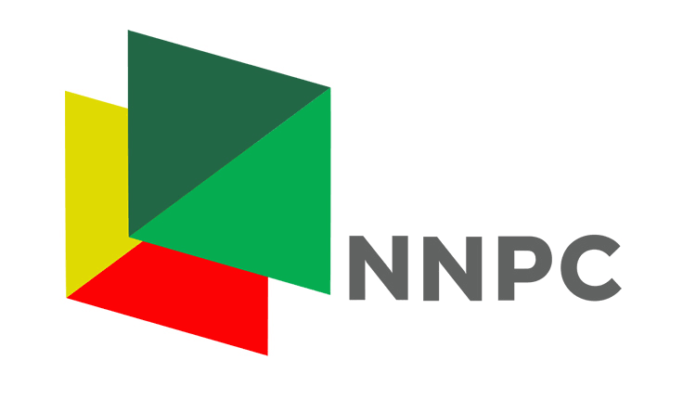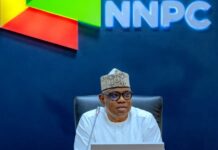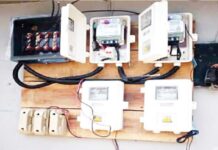Fresh facts emerging from the operations of the NNPC Ltd. have provided new insight into the activities of the company, affirming that the firm actually made a whopping profit of N674.1 billion in 2021.
The latest facts appear to contradict some views by notable individuals and institutions on the activities of the company in recent years.
Sources familiar with NNPC Ltd. and its operations told our correspondent in Abuja on Thursday that the available facts had laid bare some key issues for better understanding of the activities of the company.
One of the sources described the N674.1 billion as the highest profit figure to be recorded by the organisation in its 46-year history.
The source also said that the emerging facts were released to provide current and true information, to redirect and educate the public adequately for a better understanding of issues in the company.
It was learnt that some highly placed individuals and institutions have pilloried the NNPC in recent times, “churning out inaccurate information on the operations of the company, to de-market the establishment’’.
The source noted that the development had visibly put the company in the eye of the storm, stoking confusion and misleading stakeholders and the general public on the activities of the company at present.
According to emerging facts, the NNPC posted its first profit in 44 years in 2020, recording a profit of N287 billion from a loss of N803 billion posted earlier in 2018.
The company had similarly, recorded a loss of N1.7 billion in 2019 before it returned to profit-making in recent years, arising from critical business strategies adopted by the company’s management lately.
The emerging facts detailed what it described as speculative and misleading allegations that needed to be explained for better understanding of the role of the NNPC in nation building.
It cited what it described as untrue that “the NNPC has been notorious for befuddled accounting, waste, losses, run-down refineries and non-remittances of cash, due to the federation account’’.
The emerging facts explained that the essence of the making the facts public was to bring out basic truths on various issues agitating the minds of people and to keep the records straight.
It also explained that the NNPC had posted all its financial statements from 2015 to 2022, noting that certain claims could be verified in the office of the auditor-general of the federation, rather than misinforming the public.
On the allegation that the President Muhammadu Buhari administration wasted $19 billion to rehabilitate four state-owned refineries without result — the same amount the Dangote Group had invested in its 650,000-barrels per-day refinery, the emerging facts described the allegation as an attempt to mislead Nigerians.
“The totality of the spending inclusive of salaries and wages of workers can’t be compared with what it will cost to set up Dangote refinery,’’ a source in NNPC argued.
Another source also shed light on a statement that the Goodluck Jonathan administration had said it would borrow $1.6 billion for Turn Around Maintenance (TAM) but that under Buhari, the NNPC also borrowed additional $1.5 billion for the same TAM.
The source explained that the figures were wrong, saying that the company, which represented the Federal Government in its efforts to rehabilitate the refineries through an Engineering Procurement and Construction (EPC) contract with its partners had spent only its approved counterpart funding.
It added that the details were clearly spelt out in the memorandum of understanding signed for the respective refineries.
“For the records, the cost approved by the Federal Government for the rehabilitation of the nation’s three refineries are $1.5bn; $740m and $548m for Port Harcourt, Kaduna and Warri refineries, respectively.
“The two EPC contractors are Tecnimont (France), which handles the Port Harcourt Refinery rehabilitation and Daewoo (South Korea) which oversees the quick-fix projects at both Kaduna and Warri refineries.
“Under President Goodluck Jonathan, no money was borrowed for turn-around maintenance. Under President Buhari, only $1 billion was borrowed. Rehabilitation is still on-going.’’
The source also dismissed allegations by a committee of the House of Representatives that the company failed to transfer N2 trillion to the federation account after the Petroleum Industry Act (PIA) came into effect in 2021 and that Buhari unveiled a company worth $64 billion (N28 trillion at N450/$1), but that only $58.8 billion or N26 trillion was transferred.
It disclosed further that the net book value of assets transferred to NNPC as at July 1, 2022 amounted to $58.8 billion worth of assets and not cash.
“This figure is without the Nigerian Pipeline and Storage Company (NPSC) which has all the depots and pipeline network that was transferred to NNPC in 2022.
“That figure didn’t include NPSC which wasn’t moved initially at the time of being a limited liability company. So how much are we worth in asset?’’
On another allegation by members of the House of Representatives that equipment worth $250 million the NNPC ordered for the Port Harcourt Refinery years ago had not been accounted for, the source explained that over 100 containers with materials meant for the refineries were left to rot at Nigerian Ports.
“This was before Buhari’s administration and it was attributed to the reckless procurement process in the past.
“Things started to change for the better with the rehab programme in 2021. This follow-up also led to the reduction in the cost of turnaround maintenance,’’ according to the source.
We learnt that lawmakers had also alleged that NNPC Ltd. had claimed to have 25 subsidiaries, whereas on record only 21 could be accounted for.
However, the source explained that there were 25 subsidiaries in NNPC Ltd. prior to re-organisation.
“All unviable subsidiaries were shut down in a bid to reduce overhead cost and optimise revenue.
“Businesses with duplicated functions were merged for economies of scale and optimisation and new units were created like new energies, leading to reduction in the number of subsidiaries from 25 to 21,’’ the source disclosed.

























